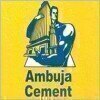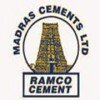
UltraTech Cement
Proud winner of ABECA 2024 - AmbitionBox Employee Choice Awards
Filter interviews by
UltraTech Cement Technical Service Engineer Interview Questions and Answers
UltraTech Cement Technical Service Engineer Interview Experiences
4 interviews found
(2 Questions)
- Q1. Civil engineering
- Q2. Concrete technology, building materials
I applied via Campus Placement and was interviewed in Mar 2024. There was 1 interview round.
Aptitude test , coding test, group discussion, assignment, case study, HR, technical,one-on-one round, other
Interview Preparation Tips
I applied via Company Website and was interviewed in Apr 2023. There were 3 interview rounds.

Not bad easy test, not that much difficult
(3 Questions)
- Q1. VRM roller wear testing
- Q2. Capex of Project
- Q3. Safety standards
What people are saying about UltraTech Cement






I applied via Recruitment Consultant and was interviewed in Oct 2020. There was 1 interview round.
Interview Questionnaire
1 Question
- Q1. About old experiences and my project
Interview Preparation Tips
UltraTech Cement interview questions for designations
Interview questions from similar companies

Technical Service Engineer Interview Questions & Answers
Ambuja Cementsposted on 19 May 2024
I applied via Campus Placement and was interviewed in Nov 2023. There were 4 interview rounds.
Technical written test.
(1 Question)
- Q1. Technical interview related to cement
(1 Question)
- Q1. Again a technical round with senior
(1 Question)
- Q1. Salary discussion and other details.

Technical Service Engineer Interview Questions & Answers
The Ramco Cementsposted on 10 Sep 2024
I applied via Recruitment Consulltant and was interviewed in Mar 2024. There was 1 interview round.
(1 Question)
- Q1. Fineness of cement?
Interview Preparation Tips

Technical Service Engineer Interview Questions & Answers
Dalmia Bharat Cementposted on 19 Jun 2023
I applied via Referral and was interviewed before Jun 2022. There were 2 interview rounds.

(6 Questions)
- Q1. What are the types of cement available in the market?
- Ans.
Types of cement include Portland cement, white cement, rapid hardening cement, low heat cement, sulfate resisting cement, etc.
Portland cement is the most common type used in construction
White cement is used for architectural purposes
Rapid hardening cement sets quickly
Low heat cement generates less heat during hydration
Sulfate resisting cement is used in areas with high sulfate content in soil or water
- Q2. What are the Tests on fresh concrete and hardened concrete ?
- Ans.
Tests on fresh concrete include slump test, air content test, and temperature test. Tests on hardened concrete include compressive strength test, flexural strength test, and durability test.
Tests on fresh concrete: slump test, air content test, temperature test
Tests on hardened concrete: compressive strength test, flexural strength test, durability test
- Q3. What are the main reason for cracks development in slab?
- Ans.
The main reasons for cracks development in slabs include shrinkage, settlement, overloading, and poor construction practices.
Shrinkage of concrete during curing process
Settlement of underlying soil
Overloading beyond the design capacity
Poor construction practices such as inadequate reinforcement or improper curing
Temperature changes causing expansion and contraction
- Q4. How do you test cement on site?
- Ans.
Cement can be tested on site using various methods such as slump test, compressive strength test, and temperature monitoring.
Perform a slump test to measure the consistency and workability of the cement mixture.
Conduct a compressive strength test by casting cubes or cylinders of cement and testing their strength after a specified curing period.
Monitor the temperature of the cement during mixing and curing to ensure pro
- Q5. What are the IS Codes for different types of cement?
- Ans.
IS Codes for different types of cement
IS 269: Ordinary Portland Cement
IS 455: Portland Slag Cement
IS 1489: Portland Pozzolana Cement
IS 8041: Rapid Hardening Portland Cement
IS 12330: Sulphate Resisting Portland Cement
- Q6. How do you calculate the target strength of concrete?
- Ans.
The target strength of concrete is calculated using the characteristic compressive strength of concrete and the standard deviation.
Calculate the characteristic compressive strength of concrete based on the mix design.
Determine the standard deviation of the concrete mix.
Use the formula: Target strength = Characteristic strength + (1.65 * Standard deviation)
For example, if the characteristic strength is 30 MPa and the st...
Interview Preparation Tips
- Cement
- Concrete
- IS codes

I was interviewed in Jul 2022.

(2 Questions)
- Q1. Cement IS code, test report,,
- Q2. Slump cone, cube casting , process
Interview Preparation Tips
- Contraction
I'm interested in up , all City.

Technical Service Engineer Interview Questions & Answers
Ambuja Cementsposted on 1 Jul 2024
(2 Questions)
- Q1. What is the need of Technical service engineer
- Ans.
Technical service engineers are needed to provide technical support, troubleshoot issues, and ensure customer satisfaction.
Provide technical support to customers
Troubleshoot and resolve technical issues
Ensure customer satisfaction with products or services
Conduct product demonstrations and training for customers
Collaborate with sales and engineering teams to improve products or services
- Q2. What is cement ratio
- Ans.
Cement ratio refers to the ratio of cement to other materials in a concrete mixture.
Cement ratio is the proportion of cement used in a concrete mix compared to other materials like sand, aggregate, and water.
It is typically expressed as a ratio, such as 1:2:4, which means 1 part cement, 2 parts sand, and 4 parts aggregate.
The cement ratio can vary depending on the strength and durability requirements of the concrete be
Interview Preparation Tips

Technical Service Engineer Interview Questions & Answers
Dalmia Bharat Cementposted on 18 Oct 2021
I applied via Recruitment Consultant and was interviewed in Sep 2021. There were 3 interview rounds.
Interview Questionnaire
3 Questions
- Q1. 1 day strength of previous company cement.
- Q2. Complaint handling questions.
- Q3. Manufacturing process of cement
- Ans.
The manufacturing process of cement involves several stages including quarrying, crushing, grinding, blending, and burning.
Quarrying: Limestone and clay are extracted from quarries.
Crushing: The extracted materials are crushed into smaller pieces.
Grinding: The crushed materials are further ground into a fine powder.
Blending: The powdered materials are mixed in the right proportions to create the desired cement composit...
Interview Preparation Tips
UltraTech Cement Interview FAQs
Tell us how to improve this page.
UltraTech Cement Interviews By Designations
- UltraTech Cement Assistant Manager Interview Questions
- UltraTech Cement Sales Executive Interview Questions
- UltraTech Cement Technical Executive Interview Questions
- UltraTech Cement Mechanical Engineer Interview Questions
- UltraTech Cement Senior Officer Interview Questions
- UltraTech Cement Channel Relationship Manager Interview Questions
- UltraTech Cement Senior Engineer Interview Questions
- UltraTech Cement Sales Officer Interview Questions
- Show more
Interview Questions for Popular Designations
- Service Engineer Interview Questions
- Customer Service Executive Interview Questions
- Customer Service Associate Interview Questions
- Technical Service Specialist Interview Questions
- Senior Technical Services Specialist Interview Questions
- Advisory Technical Services Specialist Interview Questions
- Technical Lead Interview Questions
- Service Advisor Interview Questions
- Show more
UltraTech Cement Technical Service Engineer Interview Process
based on 3 interviews
Interview experience
Interview Questions from Similar Companies
Fast track your campus placements
UltraTech Cement Technical Service Engineer Reviews and Ratings
based on 9 reviews
Rating in categories
|
Assistant Manager
2.2k
salaries
| ₹7 L/yr - ₹17 L/yr |
|
Senior Engineer
552
salaries
| ₹4.5 L/yr - ₹13 L/yr |
|
Assistant Officer
478
salaries
| ₹3.3 L/yr - ₹9.6 L/yr |
|
Engineer
451
salaries
| ₹3 L/yr - ₹11 L/yr |
|
Assistant Engineer
397
salaries
| ₹2.8 L/yr - ₹9.6 L/yr |

Ambuja Cements

ACC

Shree Cement

Dalmia Bharat Cement
- Home >
- Interviews >
- UltraTech Cement Interview Questions >
- UltraTech Cement Technical Service Engineer Interview Questions


















